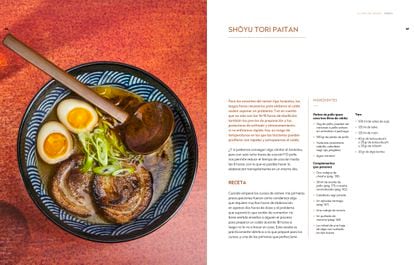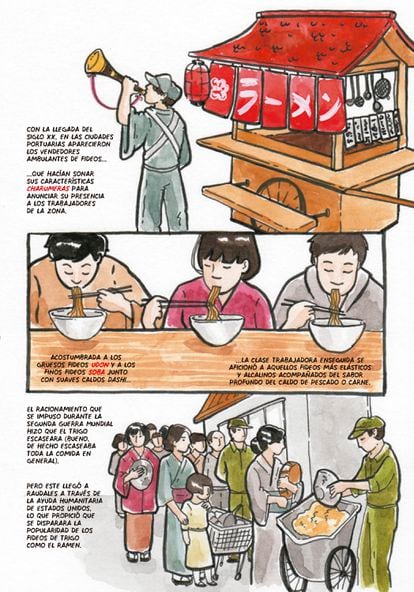The 21st century brought with it a passion for minimalism and for cuisine that came to us from the East, especially from Japan. The big cities began to absorb Japanese ways and traditions. First it was sushi, then tempuras, later gyoza and now the ramen. This fever for this popular Japanese stew began in New York and Los Angeles when restaurant signs began to be seen on the streets announcing 'ramen is served here' and soon, it spread throughout the world.
In Spain, in recent years, ramen has crept into our appetites, causing the proliferation of restaurants specializing in the Japanese stew and the publication of books dedicated, one hundred percent, to this recipe.
“What is the reason for the popularity of ramen? —asks the author of The Book of Ramenedited by Satori– to find an answer to this question – he continues – we must make two approaches: the first, with regard to Japan; the second, about his arrival in the West.” In this book, written by Marc Ortiz, creator of the first portal in Spanish about ramen and cook in Comerjapones.com, answers are given to all the historical doubts and curiosities that may surround the world of ramen. A very in-depth book, useful for those who investigate or want to know the true history of this stew. At the end of the book, the author leaves a varied and traditional-based recipe book.

But ramen where does it come from? It seems that the term comes from the word lickedwhich refers to a traditional Chinese noodle soup. Lamian It means stretching the noodle. According to the mecca of ramen in the world, the Shin-Yokohama Ramen Museum: “the ramen “It arrived in Japan at the end of the Edo period, when Chinese immigrants landed in the port cities of Yokohama, Kobe, Nagasaki and Hakodate and quickly spread their food.” Especially this one: a bowl of broth with noodles and meat or fish. A plate of fast food, rich, forceful and cheap. Perhaps because of this simplicity and that feeling that with just a few ingredients you can create something different, there is not a single recipe for how to make the ramen, but there are as many as there are regions in Japan. According to The Book of Ramen by Marc Ortiz, some are made with a ball of miso paste and hot spices (Akayu ramen), others with fish or shellfish (Iwate iso ramen), and sometimes, along with the broth and noodles, chopped bacon is added (Kyoto ramen), For example.

Speaking of creativity and imagination, or ways of telling a story, nothing like the book Ramen! A cookbook in comic format (Dome) with illustrations by Sarah Becan and texts by writer and chef, Hugh Amano. Since 2020, when its first edition was published until today, it continues to be a top seller in specialized bookstores. The book is a passage through the tradition, history and recipes of this preparation, an illustrated wonder where its protagonists take us through the streets of Japan, the Japanese taverns and the kitchens where they prepare with all the ingredients the ramen. Among its pages we will discover, among many other things, how we should eat: bring the bowl close to our mouth, caress the ingredients with our chopsticks, slurp shamelessly while we eat the noodles. “The act of sipping is an integral part of the experience of ramen and show the cook (even if it is yourself) that you are enjoying it,” he describes. In short: a work of art.

One of the latest publications on this topic is The Art of Ramen. 80 simple bowls and broths (Cive Tintas Publishing House) where each of the parts are dissected so that it can be done at home. According to the author, Makiko Sano: “the bowls of ramen, with its four main elements (sauce, soy, noodles and seasonings) allowed experimentation and creativity to be unleashed. “Younger chefs adapted it because it allowed them to play with umami broths and customizable seasonings.” Therefore, in this volume, he proposes to be creative and original at home, but also to know and practice tradition. “Although this book will inspire you to create your own bowls,” explains its author, “these are the five basic dishes on which most variations are usually built: tonkotsu ramen, ramen of miso, shoyu ramen, shio ramen and tsukemen”. In short: a very practical copy, with illustrative photographs and full of good ideas.

#39ramen39 #told #slurping #soup #caressing #ingredients #eating #chopsticks